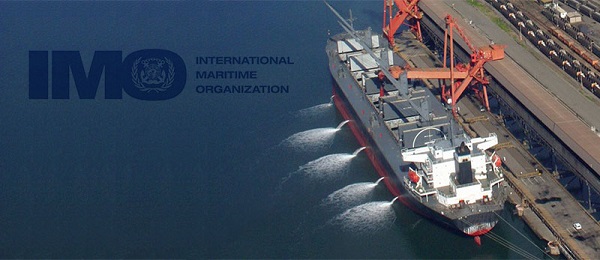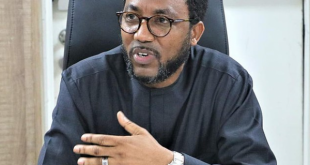 By Ada Montserrat Okeke, LL.B (Durham), LL.B (IMLI, Malta), B.L
By Ada Montserrat Okeke, LL.B (Durham), LL.B (IMLI, Malta), B.L
INTRODUCTION
Shipping is essential to the global economy; over 90% of all global trade is carried by ships.[1] Nigeria is a maritime nation; with a coastline measuring over 853 kilometres, a 12 nautical mile territorial sea, a 200nm exclusive economic zone and continental shelf, with further claims on the outer limits of the continental shelf submitted to the United Nations Commission on the Limits of the Continental Shelf (CLCS).[2] Furthermore, with Nigeria ranking 27/136 and 34/137 in export and import ranking respectively,[3] Nigeria cannot afford to be aloof to developments in the international maritime industry. It is to this end that Nigeria has signed many of the International Maritime Organisation (IMO) conventions and domesticated them; although the fruits of these conventions lie in implementation; the general ailment of most legislations in the country.
The International Convention for the Control and Management of Ship’s Ballast Water and Sediments, 2004 (Ballast Water Convention) is one of such conventions which Nigeria acceded to on 13October, 2005. Article 18 of the Convention states that the Convention will come into force ‘twelve months after the date on which not less than thirty States, the combined merchant fleets of which constitute not less than thirty-five percent of the gross tonnage of the world’s merchant shipping’ accede to the Convention. For over 10 years, the required quota was not reached till Finland in September 2016, acceded to the Convention, therefore triggering Article 18. Therefore, the Convention is now set to enter into force now on 8 September, 2017.

Nigeria has acceded to this Convention and is now bound by international law to ensure that its obligations under the Convention are fulfilled.[4] This essay aims to explore firstly, the need for the Ballast Water Convention, its pertinence for Nigeria and the replete obligations facing the country; government and ship-owners under this convention.
THE NEED FOR THE BALLAST WATER CONVENTION?
Ballast is anything introduced into a ship to provide stability and manoeuvrability to a vessel during voyage. It is used to balance out the vessel when it is at less than maximum cargo load, either during a transit to pick up a product, or after dropping off a portion of the cargo before continuing on to the next port.[5]
Since the introduction of steel-hulled vessels about 120 years ago, water has been used as ballast to stabilize vessels at sea.[6]Ships principally use water as ballast because it is readily available, easy to load on and off a ship, therefore efficient and economical. Ballast water is drawn into a vessel by intake pumps located in the hull, below the waterline. Ballast water can often be taken up and dropped off at any point during a voyage, depending on the needs of the vessel, therefore it is often a mix of waters from many ports.[7]An unintended consequence of taking up ballast water is that some marine species or organisms which are contained in the water are taken upas well. Depending on the duration of the voyage amongst other factors, some organisms are able to survive the journey and are subsequently released alive into the waters of the destination port when the ballast water is discharged.
It is important to state that movement of marine organisms from one place to another is not necessarily negative;in fact it is a normal evolutionary process which takes place through natural transport such as wind or ocean currents.[8] This process later became aided by human activity through travel by sea. However, what is new and alarming is the speed and volume at which these marine organisms are transported across ports and different ecosystems through shipping activities. Rapid increases in trade and shipping mean that we are now capable of moving more organisms around the world (in the ballast water of ships) in one month, than we used to in one century. It is estimated that about 10 billion tonnes of ballast water are transferred globally each year,[9] and one cubic metre of ballast water may contain up to 50,000 zooplankton specimens.[10]
The majority of marine species include a planktonic phase in their life cycle.[11] This means that there are thousands of different marine species that may be carried in ships’ ballast water;[12] basically anything that is small enough to pass through a ship’s ballast water intake ports and pumps. This includes bacteria and other microbes, small invertebrates and the eggs, cysts and larvae of various species, including most fish. Although not all of these will survive in the ballast tank because it is a hostile environment with considerable disturbance, lack of food and light. These organisms that survive through such a hostile environment,when off loaded in a new environment, usually become aggressive, invasive, out-compete native species and multiplyinto pest proportions,[13]causing serious problems to both marine life and humans. This phenomenon is what is termed ‘bio-invasion’. By out–competing native marine species, they can overwhelm ecosystems, leading to loss of food sources for other marine species and loss of native marine species. This loss also has a big impact on communities who rely on the sea for their food and income.[14] Invasive alien species can also carry a potential health risk for humans from contamination of the water supply and food chain.
One of the biggest problems with this biological invasions, is that once these species have invaded, the process is virtually irreversible.[15]Unlike temporary oil spills and other chemical pollution events where natural biologicalprocesses eventually decompose the alien substances so that the impacted environment intime might regain pre-spill status, at an aquatic bio-invasion, thenatural biological processes work to the benefit of the alien or invasive species, providing them with an environment to thrive and eventually making itessentially unstoppable.Bio-invasion has been identified as one of the four biggest threats to the world’s oceans.
THE DANGERS OF BIO-INVASION FOR NIGERIA
It is important that Nigeria does not view this problem of bio-invasion as far removed from her reality, because it is perhaps more pertinent to the nation than even the more developed nations. As noted earlier, Nigeria is a maritime nation; this means that there are several ways that we might be affected by a bio-invasion.
Firstly, as stated in the introduction, Nigeria ranks very high in the import and export statistics. According to the Nigerian Ports Authority and National Bureau of Statistics, in 2016, Nigeria had 4, 0 25 vessels with gross registered tonnage of 122, 186, 758 that berthed in its ports.[16]Added to the fact that Nigeria is an oil producing nation, with our continental shelf and territorial waters littered with foreign vessels, prospecting, drilling and commercially excavating oil, the threat of a bio-invasion must take on real meaning to us. Failure to effectively implement the obligations under the Convention could lead to dumping of ballast water by ship-owners who have not complied with the Convention in our waters, therefore opening up to the threat of bio-inavsion. Similar cases of dumping of hazardous wastes by Western nations on poorer African countries (including Nigeria) have severally been recorded with little action taken against such ship-owners.[17]
In fact, it is usual for such ship-owners to do so with the knowledge and acquiescence of nationals who are lured by financial gains.[18]One such recorded incident took place in Koko,Nigeria in 1987 between Italian and Nigerian businessmen, where the former shipped toxic waste of several Italian industries toNigeria for storage in the backyard of a Nigerian businessman, whodescribed them merely as miscellaneous construction materials.[19]It was later discovered that the waste containedpolychlorinated biphenyls (PCBs), asbestos fiber and perhaps dioxin; chemicals causing several infections, diseases and illnesses including cancer. Several workers employed by the government for clean-up ended up hospitalised with problems ranging from chemical burns, nausea, to paralysis.[20]Even those who never came in direct contact with the chemical were affected; according to the senior medical officer at Koko GeneralHospital, theseven premature births that occurredwithin a two-week period in July were due to the high toxicityof the dumpsite.[21]
It is important that the maritime administration works assiduously to protect our maritime environment by preventing dump of ballast water by non-compliant ships. It is also important to educate port officials so that they are not inclined for any form of financial or material reward to turn a blind eye to such errant ships. Unlike hazardous wastes in Koko, the effects of bio-invasion cannot be easily contained and therefore there is need for effective prevention. A possible effect of a bio-invasion could be a situation where our territorial waters are severely invaded with these alien species, and with little monitoring and eradication systems, ships might be unwilling to berth in our ports, preferring to berth in neighbouring countries. This would cause untold hardship not only for our maritime industry but also businesses who depend on transportation by sea. Goods will be entering the country at additional costs and this could easily cause or escalate an inflation.
Furthermore, Nigeria is a fishing nation; with a coastline spanning about 853km2 bordering the Gulf of Guinea and the Atlantic Ocean. With 200nm Exclusive Economic Zone, Nigeria’s sphere of maritime influence extends to an estimated 210 900km2.[22]This automatically means that the fishing industry is bound to be robust. This is confirmed by Mr. Joseph Overo {former president of the Nigerian Trawler Owner’s Association (NITOA)}who states that the Nigerian fishing industry is worth over N40billion.[23]Although the industry is heavily beset with piracy and sea robbery, the industry still meets a percentage of the fish demand in Nigeria. However, the danger of bio-invasion completely threatens the current state of the industry and its potential for growth. It is arguable that the problem of sea robbers and pirates could be solved with efficient and aggressive surveillance, policing and monitoring of our waters by well trained and armed Navy officers. However, as noted above, the dangers of bio-invasion are more permanent and more frightening; an entire ecosystem may be destroyed effectively rendering a fishing industry non-existent. This of course comes with the consequential disadvantage of loss of jobs and means of livelihood for many. This was the case with the invasion of the golden mussel into Belem Novo, a traditional fishing community in Southern Brazil. In less than two years, all fishing activities in the area had completely ceased.[24]A further and perhaps more severe possibility is the poisoning of our food chain.
Moreover, the threat of bioterrorism is also a major concern in nations today. Sophistication in terrorism today portends the intentional and purposeful introduction of invasive and alien species can be an easy way to eliminate impoverish an economy and populations, even to the point of threatening their health and lives.
Therefore it is important that Nigeria sees the threat of bio-invasion as real and indeed urgent. The Ballast Water Management Convention has put in place obligations and measures to enable contracting parties to protect themselves and for ship-owners flying the flag of these states to participate in protecting the marine environment.
BWM CONVENTION: GENERAL DEFINITIONS
The BWM Convention is a product of 14 years of consultation and deliberations by the International Maritime Organisation (IMO); the specialised agency of the United Nations responsible for the international regulation of ship’s safety and security as well as prevention of marine pollution from ships.[25] The Convention consists of 22 Articles, an Annex with 5 sections (A to E), and 14 Technical Guidelines developed to support national authorities, ships’ masters and owners, equipment manufacturers and class societies, and to encourage the harmonised implementation of the different requirements.
The Convention sets standards to guide and monitor the uptake of ballast water so as to avoid the dangers associated with bio-invasion. As defined in the Convention, Ballast Water Management means mechanical, physical, chemical, and biological processes, either singularly or in combination, to remove, render harmless, or avoid the uptake or discharge of Harmful Aquatic Organisms and Pathogens within Ballast Water and Sediments.[26]
Harmful Aquatic Organisms and Pathogen[27] are defined as aquatic organisms or pathogenswhich, if introduced into the sea including estuaries, or into fresh water courses, may create hazards to the environment, human health, property or resources, impair biological diversity or interfere with other legitimate uses of such areas.What is interesting thing about this definition is the presence of the wordharmful before the aquatic organisms and pathogens. It is striking because in reality any specie could effectively become harmful when it is placed unnaturally outside of its natural habit. Therefore the effect of the BWM is not to govern some introduction of some specific harmful species but to minimise the unnatural and human-induced introduction of species to aquatic environments where they potentially could become invasive and therefore harmful.
Ships[28] are defined as ‘a vessel of any type whatsoever operating in the aquatic environment and includes submersibles, floating craft, floating platforms, FSUs and FPSOs.’ This is an especially relevant for Nigeria as an oil producing nation and with major oil exploration work taking place in the country. Article 3 of the Convention goes further to define what ships are covered by the scope of the BWM Covention; i.e. ships entitled to fly the flag of a Party; andships not entitled to fly the flag of a Party but which operate under the authority of a Party. It also notes those to which the convention does not apply; including the common exception with all maritime conventions; warship, naval auxiliary or other ship owned or operated by a State and used, for the time being, only on government non-commercial service. Also for obvious reasons, ships not designed or constructed to carry Ballast Water and permanent Ballast Water in sealed tanks on ships, that is not subject to discharge, are exempt from the applicability of the Convention as well.
Ships of a Party which only operate in waters under the jurisdiction of that Party are also exempted from the scope of the Convention. This would seem to exclude majority of Nigerian ship-owners as most ships owned by Nigerians only operate within Nigeria. Indeed according to Chief Isaac Jolapamo, former President Nigerian Ship-owners Association, not ‘one tonne of the cargo imports coming into Nigerian ports came with a Nigerian vessel and not one litre of crude oil exported last year was carried on a Nigerian vessel.’[29] Most Nigerian ship-ownersare unfortunately limited to offering logistics, tug and tow and minor salvage services to foreign owned ships coming into Nigeria. Therefore, it follows that the Convention is not applicable to ships which operate only within Nigerian jurisdictional waters so long as they do not impair or damage the environment, human health, property or resources of adjacent or other States.[30]
Regulation A-4also contains a peculiar situation for ships which ordinarily would have the Convention applicable to them but are ‘exempted’ by a Party. These include ships on a voyage or voyages between specified ports orlocations; or to a ship which operates exclusively between specified ports orlocations and granted to ships that do not mix Ballast Water or Sediments other than betweenthese specified ports or locations. However, paragraph 2 states that ‘exemptions granted pursuant to paragraph 1 shall not be effective until aftercommunication to the Organization and circulation of relevant information to the Parties.’ Also such exemptions shall not impair or damage the environment, human health, property or resources of adjacent or other States.[31]
Ships belonging to non-contracting States are also subject to the applicability of the Convention provided that they are within the jurisdiction of contracting states. Parties are obligated to apply the requirements of this Convention as may be necessary to ensure that no more favourable treatment is given to such ships.
NIGERIA’S OBLIGATIONS UNDER THE BALLAST WATER MANAGEMENT CONVENTION.
The primary obligation which the Nigerian government must fulfil under international law is to domesticate the BWM Convention. Nigeria is a dualist State and this means that signing of the Convention alone does not automatically translate into rights and obligations until they are domesticated (passed into law in Nigeria by the National Assembly {Section 12 (1) Constitution of the Federal Republic of Nigeria, 1999 (as amended)} and published in the Official Gazette. This principle was also expounded and applied by the court in Abacha v Gani Fawehinmi..[32]Therefore, as long as the Convention is not domesticated, the remedies and measures provided under the convention to deal with this threat of bio-invasion will remain largely elusive. As the Convention comes into force in September 2017, an easy way for domestication could be a simple amendment of the Merchant Shipping Act 2007 (MSA 2007).Section 336 (1) (b) of the MSA 2007 states that from the date of its commencement, a list of IMO Conventions will come into force in Nigeria. Section 336(1) (b) can thus be amended to include the BWM Convention, thus effectively domesticating the BWM Convention. However such means of domestication does not leave room for specifically addressing the obligations which the Convention imposes. Therefore, it will be important for further regulations to be made to that effect.
Apart from the general obligations on the government to give full and complete effect to the Convention, co-operate with other parties for the purpose of effective implementation, compliance and its enforcement (Article 1), there are more specific obligations requiring positive actions and investments towards its implementation. The provisions containing these obligations will be explored in detail below.
Article 5
Perhaps the most important of such specific obligations for Nigeria as a Port State, is found in Article 5 requiring the designation of Sediment Reception Facilities.[33]Sediment Reception Facilities are facilities set up at ports and terminals where ballast tanks are cleaned or repaired and ships can safely dispose of ballast sediments. Further guidelines for setting up these reception facilities have been provided in an MEPC Resolution[34] termed ‘IMO Guidelines for Sediment Reception Facilities’ (G1). The guidelines provide a non-exhaustive list of factors to consider in designating these facilities. These include
- regional, national and local legislation which will affect the facility and related items, human health, sampling,
- testing and analysis of sediment; storage of sediment and storage conditions;
- estimated required capacity (volume/weight) including but not limited to moisture content of the sediment the facility will handle;
- environmental benefits and costs;
- proximity of available sites to local ballast tank cleaning and repair facilities;
- effect on the environment in construction and operation of the facility;
- equipment required to off load sediment from ships, such as cranes; human health; safety;
- maintenance;
- operational limitations; and
- waterway access, approaches and traffic management.[35]
The guidelines also stipulate disposal, handling and treatment measures for the sediment in order to avoid unwanted side effects that may create a risk to or damage to the Party’s environment, human health,property or resources or those of other States.[36]
Regulation B-3.6 loosely refers to Ballast Water Reception Facilities, which are quite distinct from Sediment Reception facilities and are governed by different guidelines. Unlike the sediment reception facility where there is an express obligation on the State to provide it, there is no such obligation with regards to Ballast Water Reception facilities. Regulation B-3.6 simply notes that the rules contained in Regulation 3 pertaining to Ballast Water Management systems of ships do not apply to ships that discharge Ballast Water to a reception facility designed taking into account the Guidelines[37] developed by the Organization for such facilities. This guideline; IMO Guidelines for Ballast Water Reception Facilities (G5), is rather similar to G1 Guidelines for Sediment Reception Facilities.
This requirement for a sediment reception facility (and possibly a Ballast Water Reception Facility) arguably makes the BWM one of the most expensive Conventions to implement. Major questions are thrown up as a result; which include; does Nigeria ordinarily have ballast tank cleaning facilities, and do the obligations in Article 5 obligate us to have one? If there are already ballast tank cleaning facilities, the costs are only half reduced. Effective implementation of Article 5 requires taking into consideration such factors as stated above which obviously involve huge financial implications for the nation. However, this is an implication that must be undertaken to avoid that which the Convention sets out to prevent.
Article 7
Article 7 provides for the survey and certification obligation of each party and these duties are further enunciated in Regulation E. This article is common with most IMO Conventions. It calls on Contracting Parties as Flag States i.e. states under which ships are registered to provide survey and certification for ships registered under their flag. Although this is a fairly standard article as already stated, there are a few things which make this obligation worthy of note. Firstly, it is important to note that Regulation E-1 (1) extends this survey not only to Nigerian registered ships but also to floating platforms, FSUs and FPSOs.
Second thing to note with regards to Article 7 and Regulation E is the fact that there is a need for training for people who would be involved in this survey. Regulation E-1 (3) notes that surveys of ships for the purpose of enforcement of the provisions of this Convention shall be carried out by officers of the Administration. In light of the risks at stake, the frequency of these surveys (initial, renewal, intermediate, annual, and additional surveys) and the technicalities of the Convention and the Ballast Water Management Systems available, it is important that these surveys are conducted with maximum efficiency and maximum knowledge of what is involved. It is not enough to place officers at ports who are only skilled at making checklists off papers. These same officers when well trained will also be able to perform the Article 9 obligation of inspection of ships suspected to be in violation of the Convention. This inspection does not only stop at inspection of the International Ballast Water Management Certificate or the Ballast Water Record Book, it also extends to sampling of the ship’s ballast water. Therefore not only must there be infrastructure in place to implement sampling, but there must also be knowledgeable and well trained officials to conduct surveys and inspection of ships in an efficient manner to avoid delay to the vessels.[38]This is perhaps why the convention notes that the Administration mayentrust the surveys either to surveyors nominated for the purpose or to organizations recognized by it.
Only after successful completion of the survey is a ship presented with a Ballast Water Management Certificate, issued under the authority of the State and endorsed by the Administration or the surveyor or organisation so nominated.[39]The Regulation in Appendix 1 gives a format of the Certificate and also lays down extensive guidelines on duration and renewal of the Certificate.[40]This Certificate serves as a travel document of some sort for the ship as it is recognised by all contracting states and possibly non-contracting States looking to protect their waters and is most likely the first step during an inspection process under Article 9. Where a ship does not carry a valid certificate or fails the ship, its equipment or its crew fail to comply with the requirements of the Convention,[41] then a detailed inspection may be carried out, and such a ship must be barred from discharging Ballast Water until it can do so without presenting a threat of harm to the environment, human health, property or resources.
Article 10
Another important obligation which Nigeria must perform under this Convention is that of cooperation with the flag States of defaulting ships or Port States reporting default by Nigerian registered ships. Article 10 notes that parties shall co-operate in the detection of violations and the enforcement of the provisions of this Convention.
Under Article 10 of the Convention, Nigeria, as a Flag State or as a Port State may warn, detain, or exclude a ship detected to have violated the Convention. It may also grant the ship permission to leave the port or offshore terminal for the purpose of discharging Ballast Water or proceeding to the nearest appropriate repair yard or reception facility available, provided doing so does not present a threat of harm to the environment, human health, property or resources. This may cause a similar problem of ‘Places of Refuge’ facing ships, usually oil and chemical tankers, who are damaged or in danger and seek ports to discharge their cargo or repair the ship. Most states are unwilling to have such ships in their ports because of danger oil or chemical pollution and the astronomical costs involved in clean up and restoration efforts.[42] As earlier noted, the danger of bio-invasion is considered by many as more grievous than these chemical forms of pollution, therefore this problem as a result of bio-invasion might be something to anticipate.
Article 8
Under this Article 10 duty, Nigeria as a party to the Convention is also obligated to notify and send a report to the Flag State of a violating ship and in the same vein will receive reports about its ships which violate the Convention in other contracting States. To effectively implement this duty of cooperation, Article 8 obligations of establishing sanctions under the law of the Administration must be implemented. This is the reason why it would not be enough to merely domesticate the MSA 2007, without making subsequent relevant regulations. The maritime administration of Nigeria (NIMASA) is expected to promptly respond to reports on violations by Nigerian flagged vessels, carry out its investigations and institute legal action if there is evidence to prove liability. The Administration (NIMASA) is also obligated under the Convention to promptly inform the Party that reported the alleged violation, as well as the IMO of any action taken. Therefore, for alleged violations to be met with lacklustre interest either for lack of means to conduct investigation or paucity of laws to institute proceedings when there is compelling evidence would cast Nigeria in very bad light indeed among the comity of Nations. Therefore, for alleged violations to be met with lacklustre interest either for lack of means to conduct investigation or paucity of laws to institute proceedings when there is compelling evidence would cast Nigeria in very bad light indeed among the comity of Nations.
IMPLICATIONS OF THE BALLAST WATER CONVENTION FOR SHIP-OWNERS
The BWM is replete with obligations for Ship-owners. Most of these obligations are containedin the Annex to the Convention.
Regulation A-2 notes the general applicability of the obligation to all ships to which the Convention applies to discharge Ballast Water through Ballast Water Management in accordance with the provisions of this Annex. There are exceptions to general principle as noted in Regulation A-3, which include
- the uptake or discharge of Ballast Water and Sediments in emergency situations or saving life at sea,[43]
- the accidental discharge or ingress of Ballast Water and Sediments resulting from damage to a ship or its equipment,[44]
- the uptake and discharge of Ballast Water and Sediments to avoiding or minimizing pollution incidents from the ship;[45]
- the uptake and subsequent discharge on the high seas of the same Ballast Water and Sediments;[46]or
- the discharge of Ballast Water and Sediments from a ship at the same location where the whole of that Ballast Water and those Sediments originated and provided that no mixing with unmanaged Ballast Water and Sediments from other areas has occurred.[47]
Also a Party can grant ‘exemptions’ to some vessels as noted in Regulation A-4, but such exemptions must be communicated to the IMO to be effective. The IMO Guidelines for Risk Assessment under Regulation A-4 of the BWM Convention (G7) provide advice and information regarding risk assessment principles, methods and procedures for granting exemptions.
Regulation B-1 provides that each ship shall have on board and implement a Ballast Water Management plan, specific to each ship, which must be approved by the Administration taking into account Guidelines developed by the Organization. There are generally 3 major options, in accordance with the Convention, available to ship-owners;
- Ballast Water Isolation and Reception Facility in port.
- Ballast Water Exchange (Regulation D-1)
- Ballast Water Treatment (Regulation D 2)
Ballast Water Isolation and Reception Facility in port
This method of Ballast Water Management effectively ensures that there is no disposal of ballast water except in the same port in which the ballast water was taken in the first place, or in a port reception facility of another port. As already noted, the availability of port reception facilities is not always guaranteed as the huge expense of implementing might deter some States from setting one up, although it is stated as an obligation by the convention. However, it can be seen as a rather ‘soft’ obligation as there is really nothing else to compel Parties to make such available. Even in emergency situations where a ship is determined to violate the Convention, States are not obligated to make their reception facilities available to ships, they are given the option of excluding or sending them off to the next port with a reception facility.
Furthermore, the option of uploading and discharging at only one port is not always practicable for ships. For such to happen this means that the balance of the ship must remain the same at all time; once cargo is offloaded or more cargo taken on at a different port, the balance is affected and there will be a need to discharge or uptake more ballast water to stabilize the ship. Therefore, this option really limits the ship and not necessarily practicable in most circumstances. Therefore, it is advisable that ships look for alternative methods of BWM.
Ballast Water Exchange (D-1)
BWE means exchange of coastal water taken by a shipwith oceanic water (or mid–ocean waters).Paragraph 1(1) of Regulation B-4 requires that ships conduct BWE at least 200 nautical miles from the nearest land and in water at least 200 metres in depth (open oceanic waters), and when unable to, such BWE shall be conducted as far from the nearest land as possible, but in all cases at least 50 nautical miles from the nearest land and in water at least 200 metres in depth. (Paragraph 1 (2)).
There are two major biological and ecological principles behind BWE. Firstly, the oceanic environment is virtually inhospitable for fresh water, estuarine and most inshore and coastal planktonic organisms which are discharged into it. Also, the oceanic organisms taken in ballast and later discharged into fresh water, estuarine and inshore and coastal waters encounter hostile conditions and are equally unlikely to survive. The probability of reciprocal introduction is, therefore, virtually non–existent. Secondly, the transport of viable released organisms into the oceanic waters back to inshore coastal waters by ocean currents is extremely unlikely.
There are guidelines providing copious information on how to uptake and exchange ballast water. TheGuidelines for Ballast Water Exchange (G-6) states the three recognised methods of Ballast Water Exchange; the sequential method (the most favourably used method), the flow through method, and the dilution method (the least popular method).[48]Ships conducting BWE must be bound by Regulation D-1 performance standard. Regulation D-1 requires ships performing BWE to achieve an efficiency of at least 95% volumetric exchange of ballast water of each tank where exchange has taken place.
It must be noted that a ship shall not normally be required to deviate from its intended voyage, or delay the voyage, in order to comply with any particular requirement mentioned above.[49] Furthermore, where shipmaster reasonably decides that such exchange would threaten the safety or stability of the ship, its crew, or its passengers because of adverse weather, ship design or stress, equipment failure, or any other extraordinary condition, a ship is not expected to conduct a ballast water exchange.[50]
The Ballast Water Exchange is designed to be an interim solution; in the transitional period between the convention entering into force and the D-2 standard being phased in for all vessels, ballast water must be handled in accordance with the water exchange routines set out in the so-called ‘D-1 standard’.[51] It is expected, following the timeline set forth in Regulation B-3, that all ships will by 2017 be adherent to D-2 standards. For existing tonnage, the date of compliance with the so-called ‘D-2 standard’ will coincide with the next renewal date of a vessel’s International Oil Pollution Certificate (this is usually renewed every five years). However, any new ships with a keel laying date after September 8 2017 will be required to have a ballast water treatment system installed at delivery. However, in light of the delay in the ratification of the Convention, an updated timeline has been provided in IMO Assembly resolution A.1088(28). The revised guidelines for approval of ballast water management systems and recommended that these guidelines be adopted into the convention, and that ballast water systems installed on ships on or after October 28 2020 comply with the revised guidelines.[52]The Guidelines for Ballast Water Exchange Design and Construction Standards (G11) provides advice to shipbuilders on how to improve tank design to facilitate better exchange, and this should be taken into consideration by companies hoping to place orders for new vessels.
Ballast Water Treatment
Ballast Water Treatment is intended to be the long term solution to threats posed by bio-invasion through ballast water. Ballast water treatment is generally divided into two methods; Physical solid/liquid separation and Disinfection. However, most Ballast Water Management Systems will involve both these stages of treatment – filtering the ballast water before disinfecting it.[53]
The solid–liquid separation is the removal of suspended solid material in the ballast water. It can be used to remove larger micro–organisms from the ballast water. Separation can be achieved either by sedimentation (allowing solids to settle out due to their own weight), or by surface filtration (using a filter to remove any solids that are too large to pass through a material).[54]Disinfection (added to the first stage which is often mechanical) removes and/or inactivates micro–organism using a chemical treatment, physiochemical inactivation such as irradiation with ultraviolet light or deoxygenation (asphyxiating the micro–organisms).
Ships hoping to manage their ballast water through treatment must be conducted either during uploading the ballast water, carrying and transferring the water and discharge of the ballast water. The type of the ship, the trade pattern, operation systems, and technology determine the type of treatment. Ship designers and builders will work in cooperation with owners to define the most appropriate technology to install.[55]
Ships treating and managing their ballast water on board ships must conform to existing regulations are expected to abide by Regulation D-2 performance standard. Regulation D-2 set specific biological parameters by which ships conducting ballast water management shall discharge less than a certain volume/concentration of viable organisms. Further guidelines[56] also govern the testing and approval process of such ballast water management systems. BWMS must be approved by the maritime administration and systems which make use of chemicals or biocides; make use of organisms or biological mechanisms; or which alter the chemical or physical characteristics of the ballast water need to be approved by the IMO as well in accordance with relevant regulations and guidelines. Regulation D–3(Approval requirements for Ballast Water Management systems) and IMO Guidelines for Approval of Ballast water Management Systems (G8) and IMO Guidelines for approval of Ballast Water Management Systems that Make Use of Active Substances (G9).[57]
Ballast Water Record Book (BWRB)
Every ship is expected to travel, along with its International Ballast Water Management Certificate, with a Ballast Water Record Book (BWRB). The BWRB is a record system, which records information regarding any operation concerning ballast water.[58] This is listed in Appendix II to include whenever ballast water is taken on board, whenever ballast water is circulated or treated for Ballast Water Management purposes, whenever Ballast water is discharged into the sea, when Ballast Water is discharged to a reception facility, accidental or other exceptional uptake or discharges of Ballast Water.[59] Such entries in the record book are to be made without delay once the operation takes place, signed by the officer in charge of the operation and counter signed by the master of the ship
The Ballast Water record book is important to a ship because officers duly authorized by a Port State may inspect the Ballast Water record book on board any ship to which this regulation applies while the ship is in its port or offshore terminal, and may make a copy of any entry, and require the master to certify that the copy is a true copy. Any copy so certified shall be admissible in any judicial proceeding as evidence of the facts stated in the entry.
Summary of Ship-owners Obligations
The obligations of ship-owners under the ballast water regime have been excellently summarised by the Lloyds Register in a paper termed ‘Understanding Ballast Water Management’[60] to include:
- Understand your obligations under the BWM Convention and other national and local regulations
- Review current shipboard ballast tank, pumping and piping arrangements
- Develop a Ballast Water Management Plan
- Select and install a ballast water treatment system
- Develop training for ships’ staff and ensure they are adequately trained in BWM operations
- Develop a final Ballast Water Management Plan and submit for approval.
- Survey and certification
- Understand your obligations under the USCG regulations(for ships calling at United States Ports and planning to discharge ballast water there. There are more onerous obligations including a report which is to be submitted to the US Authorities 24 hours before arriving at a US port.
These obligations under the Convention are rather complex and cost intensive.The estimated cost for ship-owners installing approved ballast water management system will be anywhere from $1 million to $5 million per vessel.[61] The cost will depend on the type of vessel involved. As frustrating as it might be for ship-owners, it is commendable that the current situation has spurred development in maritime technology with various ship building companies coming up with systems which are they hope to be both IMO and US compliant and effectively.[62] It can be hoped that in long run as the Convention becomes common place, the market for these systems will become increasing competitive and these systems become more readily available, the costs of these ballast water systems will fall and the cost implications of these systems to ship owners will be routine, if not negligible.
CONCLUSION
The Ballast Water Management Convention is a rather detailed convention and one with several implications for ship-owners and for the government which come at huge cost implications. This was one of the reasons for the reluctance by nations in acceding to the Convention. However, the overriding need for such a convention has trumped the reluctance and we find ourselves today in a regime that favours protection of the environment over cost implications.It is important for ship-owners and companies to go back to the drawing board, for some cost-benefit analysis, to develop viable ballast water management plans and regularise their position as soon as possible.
It is important to reiterate the benefits of this convention to Nigeria, as a port State, as a coastal state and as a flag state. Nigeria is a maritime nation and is also a fishing nation. It is in our interest to maintain the integrity of our waters in every way possible. To this end, it is commended that Nigeria is usually a signatory of most maritime conventions. However, the benefits cannot be reaped without efficient and adequate implementation.
As a flag state, there is a need to ensure that vessels flying the Nigerian flag are compliant. Therefore, there is a need for well-equipped and adequately trained surveyors to inspect ships before certification and during the renewal of certificates. Nigeria must not be seen to be a flag which encourages violation of the Ballast Water Convention and half-hearted in its commitment towards protection of the environment. Indeed, it is better that the nation does not accede to such conventions than fail and neglect to carry out the obligations under the convention.
Now more than ever, as a Port State, there is a need for strict and effective monitoring in our ports to avoid violations of the Ballast Water Conventions and several other conventions which pose a threat and a risk to the ecology of our waters, the fishing industry and therefore the economy of the nation. We must also pursue effective implementation to avoid the country being a dumping ground for ballast water from ships violating the Convention. The nation can ill afford the likely economic, financial and health consequences of such practice.
[1]GloBallast Partnerships ‘Introduction to BWM and the Convention’<http://globallast.imo.org/learning/> Accessed 23 March, 2017
[2]Commission on the Limits of the Continental Shelf (CLCS) Outer limits of the continental shelf beyond 200 nautical miles from the baselines: Submissions to the Commission: Submission by the Federal Republic of Nigeria <http://www.un.org/depts/los/clcs_new/submissions_files/submission_nga_38_2009.htm> Accessed 23 March 2017
[3] Nigeria: Trade Statistics Global Edge <http://globaledge.msu.edu/countries/nigeria/tradestats> Accessed 23 March 2017
[4] Sir Robber Jennings (QC) and Sir Arthur Watts (KCMG QC) (eds) ‘Oppenheim’s International Law’ Volume I 9th edn, Oxford University Press (1996) 32.
[5]Christopher F. Deacutis Ph.D and Richard C. Ribb, ‘Ballast Water and Introduced Species: Management Options for Narragansett Bay and Rhode Island’ (2002) <http://www.nbep.org/publications/other/ballast/BallWaterIntroSpeciesRpt.pdf.> Accessed 23 March, 2017
[6]‘Ballast Water Management’ International Maritime Organisation (IMO) <http://www.imo.org/en/OurWork/Environment/BallastWaterManagement/Pages/Default.aspx> Accessed 23 March, 2017
[7]Deacutis, and Ribb (no 4) 2.
[8] ibid5.
[9] Maj De Poorter,C. Darby, and J. MacKay, ‘Marine Menace: Alien Invasive Species in the marine environment’(Gland Switzerland, 2009), 3.
[10] GloBallastPartnerships (no 1)
[11] ibid
[12] ibid
[13]Ballast Water Management (no 6).
[14] GloBallast Partnerships (no 1)
[15]‘Invaders from the Sea: A BBC Worldwide- IMO production’ (2015) <<https://www.youtube.com/watch?v=u5JkRtMTEdI> Accessed 23 March, 2017
[16] Nigerian Bureau of Statistics and Nigerian Ports Authority, ‘Shipping and Port Activities (2013-2016)’ (February 2017) <http://www.nigerianstat.gov.ng/report/507>
[17] ‘Nigeria imposes Liability on Ship-owners in Waste Dumping Cases’ (2010) <https://inecesecretariat.wordpress.com/2010/07/01/nigeria-law-imposes-liability-on-ship-owners-in-waste-dumping-cases/> Accessed 10 April, 2017
[18]Irene Bomani, ‘Africa Waste Trade’ (May 1996) <http://www1.american.edu/ted/OAUWASTE.HTM> Accessed 10 April, 2017
[19] Irene Bomani ‘Nigeria Waste Imports from Italy (NIGERIA) (May 1996) <http://www1.american.edu/ted/NIGERIA.HTM> Accessed 10 April, 2017
[20] Ibid.
[21]Ibid.
[22] A V Amire, ‘Monitoring, Measurement and Assessment of Fishing Capacity: The Nigerian Experience’ in FAO Fisheries Technical Paper No. 445, ‘Measuring Fisheries Capacity’ (2003) <http://www.fao.org/docrep/006/Y4849E/y4849e0c.htm.> Accessed 23 March, 2017
[23]Francis Ezeem, ‘Nigeria’s Industrial Fishing sector worth over N40bn’ The National Mirror (2013) <http://nationalmirroronline.net/new/nigerias-industrial-fishing-sector-worth-over-n40bn/> Accessed 28 March 2017.
[24] BBC Worldwide- IMO (no 14)
[25]ibid.
[26] Article 1 BWM Convention
[27]Ibid.
[28]Ibid.
[29]‘Green Waters Documentary on Indigenous Ship-owning in Nigeria’ (2016)
[30] Article 3 (2)(c) BWM Convention
[31] Article 3 (2)(c) and Regulation A-3, para 3BWM Convention.
[32]General Sani Abacha & Ors. V. Chief Gani Fawehinmi (2000) 6 NWLR (Pt. 660) 228
[33] Article 5 BWM Convention.
[34] Annex 4 Resolution MEPC 152.
[35]Ibid, Article 4.
[36] Ibid, Article 5.
[37]MEPC 153 (55) Guidelines for Ballast Water Reception Facilities (G5).[37]
[38] There is a need to avoid undue delay as a party is liable pay compensation for undue delay of a vessel.
[39] Regulation E-2
[40] Regulation E-5
[41] Article 9 (2) BWM
[42] Morrison; Anthony, Shelter from the Storm- the problem of places of refuge for ships in distress and proposals to remedy the problem, Doctor of Philosophy Thesis, University of Wollongong, Faculty of Law, University of Wollongong, 2001 <http://ro.uow.edu.au/theses/3218>, p. 164;
Chircop, Aldo; and Linden; Olof, (eds), Places of Refuge for Ships- Emerging Environmental Concerns of a Maritime Custom, Martinus Nijhoff, Netherlands, 2006.
[43] Regulation A-3 (1)
[44] Regulation A-3 (2)
[45] Regulation A-3 (3)
[46] Regulation A-3 (4)
[47] Regulation A-3 (5)
[48]MEPC 124(23) IMO Guidelines For Ballast Water Exchange (G-6)
[49] Regulation B-4, para 3
[50] Regulation B-4, para 4
[51]Øyvind Axe, Cecilie Koch Hatlebrekke, Anne Celine Troye, Entry into force of the Ballast Water Convention January 25, 2017http://www.internationallawoffice.com/Newsletters/Shipping-Transport/International/Wikborg-Rein/Entry-into-force-of-ballast-water-convention
[52] Ibid
[53] Glo Ballast Partnerships ‘Operational Aspects of Shipboard BWM’ <http://globallast.imo.org/learning/> Accessed 23 March, 2017
[54]Ibid.
[55] GloBallast (no 52)
[56] Guidelines 8 and 9
[57] Regulation D–3 (Approval requirements for Ballast Water Management Systems) and IMO Guidelines for Approval of Ballast water Management Systems (G8) and IMO Guidelines for approval of Ballast Water Management Systems that Make Use of Active Substances (G9).
[58] Regulation B-2, paragraph 1 and 4
[59] Regulation B-2 paragraph 4
[60] Lloyds Register, ‘Understanding Ballast Water Management’ <http://webcache.googleusercontent.com/search?q=cache:NJGno-16ty4J:www.lr.org/en/_images/229-77062_Understanding_Ballast_Water_Management_0314_tcm155-248816.0_August%25202016.pdf+&cd=2&hl=en&ct=clnk&client=firefox-b-ab>
[61]Øyvind Axe, Cecilie Koch Hatlebrekke, Anne Celine Troye, Entry into force of the Ballast Water Convention January 25, 2017http://www.internationallawoffice.com/Newsletters/Shipping-Transport/International/Wikborg-Rein/Entry-into-force-of-ballast-water-convention
[62] ibid
All rights reserved. This material, and other digital content on this website, may not be reproduced, published, broadcast, rewritten or redistributed in whole or in part without prior express written permission from KINGS COMMUNICATIONS LIMITED.
 MMS PLUS NG – Maritime, Aviation, Business, Oil and Gas News Online Newspaper with coverage in Maritime, Oil and Gas, Aviation, Power and Energy as well as Financial News
MMS PLUS NG – Maritime, Aviation, Business, Oil and Gas News Online Newspaper with coverage in Maritime, Oil and Gas, Aviation, Power and Energy as well as Financial News









